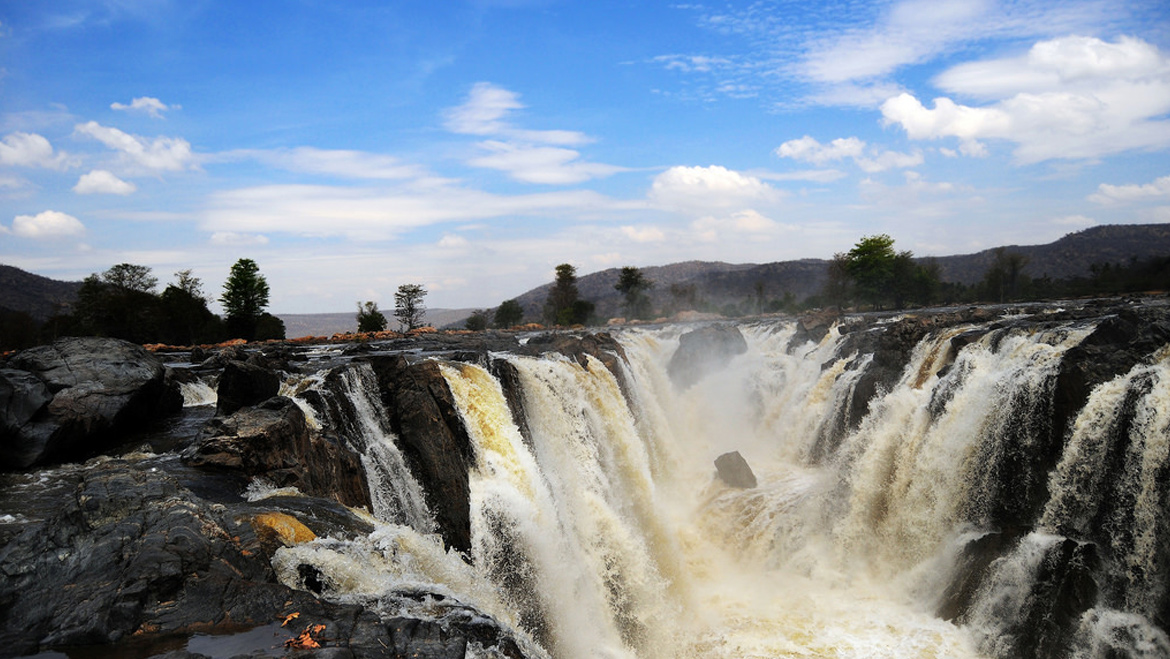South India, known for its rich cultural heritage and lush landscapes, is also home to some of the most stunning waterfalls in the world. Nestled in the Western Ghats and other mountainous regions, these natural marvels come alive in full glory during specific times of the year. To experience these waterfalls at their best, it’s essential to time your visit carefully, taking into consideration the seasons and local weather patterns.
This seasonal guide will help you explore the best time to visit some of the most famous waterfalls in South India, ensuring you witness their beauty at its peak. We will delve into each season—summer, monsoon, and winter—and how they affect the flow, ambiance, and accessibility of South India’s waterfalls.
1. Monsoon (June to September): A Spectacular Cascade of Water
Monsoon is undoubtedly the best time to visit waterfalls in South India. During this period, the heavy rainfall rejuvenates the rivers and streams, transforming the waterfalls into roaring torrents that cascade with full force. The surrounding greenery also flourishes, creating a lush backdrop that enhances the visual appeal.
a) Jog Falls, Karnataka
Best Time: July to September
Description: Jog Falls, one of the highest waterfalls in India, is a monsoon marvel. Situated on the Sharavathi River, this waterfall plummets from a height of over 830 feet. During the rainy season, the four distinct cascades—Raja, Rani, Roarer, and Rocket—combine into one massive water stream, creating a breathtaking spectacle. The misty surroundings and the thunderous sound of the water make it a must-visit during monsoon.
b) Athirappilly Waterfalls, Kerala
Best Time: June to September
Description: Known as the “Niagara of India,” Athirappilly Waterfalls in Kerala is mesmerizing during the monsoon. The Chalakudy River swells with rainwater, and the waterfall’s force increases dramatically. The verdant surroundings of the Sholayar forests further add to the beauty. You can enjoy the view from the top or take a short trek to the base for a more immersive experience.
c) Dudhsagar Waterfalls, Goa-Karnataka Border
Best Time: July to September
Description: Monsoon is the prime time to visit the Dudhsagar Waterfalls, located on the Mandovi River. Literally meaning “sea of milk,” the waterfall gets its name from the milky white appearance of the water as it cascades down the rocky cliffs. The beauty of the falls against the backdrop of the Western Ghats is at its peak during the monsoon season.
d) Hogenakkal Waterfalls, Tamil Nadu
Best Time: August to September
Description: Located on the Kaveri River, Hogenakkal Waterfalls are often referred to as the “Niagara of India” in Tamil Nadu. The monsoon rains increase the water flow, creating a smoky effect as the water hits the rocks below. Boating in circular coracles is also a popular activity, but it’s only available when the water levels are safe.
2. Winter (October to February): Calm and Scenic Beauty
The winter season is ideal for those who prefer a more tranquil and scenic experience. While the waterfalls may not be as ferocious as they are during the monsoon, they retain a steady flow, offering a peaceful ambiance perfect for photography, trekking, and picnics. The weather is also cooler and more comfortable for exploring the surrounding areas.
a) Courtallam Waterfalls, Tamil Nadu
Best Time: November to February
Description: Often called the “Spa of South India,” Courtallam Waterfalls are famous for their medicinal properties. The water here flows through forests with herbs, and locals believe it has healing qualities. Visiting in winter offers a serene experience, as the waterfall maintains a steady flow without the intensity of the monsoon.
b) Shivanasamudra Waterfalls, Karnataka
Best Time: October to December
Description: Shivanasamudra, located on the Kaveri River, consists of two sections—Gaganachukki and Bharachukki. During winter, the flow is moderate, making it a picturesque spot for visitors. The surrounding forests and hills add to the scenic beauty, and the cooler weather makes it an excellent time for trekking and photography.
c) Thommankuthu Waterfalls, Kerala
Best Time: October to February
Description: Located in the Idukki district, Thommankuthu is a series of seven cascading waterfalls. In winter, the waterfalls provide a peaceful and scenic environment. The area is also popular for eco-tourism, with activities like trekking and birdwatching making it a perfect winter destination.
d) Kuntala Waterfalls, Telangana
Best Time: November to February
Description: Kuntala Waterfalls, located in the Adilabad district, is Telangana’s highest waterfall, standing at 150 feet. During winter, the waterfall maintains a consistent flow, and the surrounding area becomes a tranquil haven. It’s a great spot for camping and trekking enthusiasts.
3. Summer (March to May): Off-Season Charm
While summer might not be the first choice for waterfall enthusiasts, it still offers unique opportunities. Many waterfalls, especially those fed by perennial rivers, continue to flow during this season. Summer also provides an opportunity to explore the nearby regions without the heavy crowds that monsoon and winter attract.
a) Meenmutty Waterfalls, Kerala
Best Time: March to May
Description: Meenmutty Waterfalls is a three-tiered waterfall located in Wayanad, Kerala. Though the flow reduces in summer, the waterfall remains a refreshing sight. The trekking experience through the forests to reach the waterfall is exhilarating, especially when the summer heat is moderated by the forest’s cool shade.
b) Iruppu Waterfalls, Karnataka
Best Time: March to May
Description: Iruppu Waterfalls, located in the Coorg region of Karnataka, is a sight to behold even during summer. Fed by the Lakshmana Tirtha River, the waterfall maintains a steady flow. The cooler temperatures of the Western Ghats make it a refreshing escape from the summer heat. The surrounding wildlife and lush greenery also add to the charm of visiting in summer.
c) Pykara Waterfalls, Tamil Nadu
Best Time: March to May
Description: Situated in the Nilgiri hills near Ooty, Pykara Waterfalls is a great summer destination. Though the water flow is less compared to monsoon, it is still an enjoyable spot, especially for families and nature lovers. The nearby Pykara Lake also offers boating facilities, making it a perfect summer retreat.
d) Muthyala Maduvu Waterfalls, Karnataka
Best Time: March to May
Description: Also known as the “Pearl Valley,” Muthyala Maduvu is located near Bangalore. While the waterfall’s flow is relatively low during summer, the surrounding landscape remains lush and inviting, providing a peaceful getaway from the city’s heat. The waterfall’s unique charm lies in the mist that creates the appearance of falling pearls, even during drier months.
Key Considerations for Visiting South Indian Waterfalls
a) Safety Precautions
While the allure of waterfalls is undeniable, it’s important to prioritize safety, especially during the monsoon season when the water flow is at its highest. Slippery rocks, strong currents, and sudden changes in water levels can pose dangers. Always follow local guidelines, stay within designated areas, and avoid swimming in unfamiliar waters.
b) Trekking and Accessibility
Some waterfalls require a bit of trekking to reach, and the difficulty level varies depending on the season. Monsoon can make trails slippery, while summer offers easier access, though the flow may be lower. Ensure you are well-prepared with proper footwear, water, and energy snacks if you’re planning to hike to the waterfalls.
c) Environmental Responsibility
South India’s waterfalls are located in ecologically sensitive areas, so it’s essential to practice responsible tourism. Avoid littering, respect wildlife, and stick to designated trails to minimize your impact on the environment.
Conclusion
The waterfalls of South India are a testament to nature’s beauty and power, with each season offering a unique perspective on these magnificent natural wonders. While monsoon remains the best time for witnessing waterfalls in their full glory, winter provides a more peaceful and scenic experience, and summer offers a quieter, off-season charm. By timing your visit according to the seasons, you can ensure that you experience the waterfalls at their finest, whether you’re seeking adventure, tranquility, or simply the beauty of nature.









